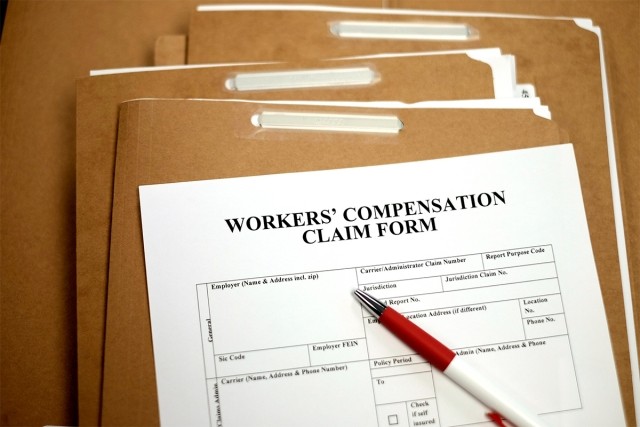Blog
How Employers Can Minimize Workers’ Comp Claims Pitfalls
The way a workers' comp (WC) claim is handled can significantly affect both outcomes and costs. Unless your organization is self-insured and self-administered, you’re not directly responsible for managing your workers' compensation (WC) claims. Still, staying involved and working closely with your claims adjuster helps ensure effective claim management.
Since claim outcomes affect employers financially, Human Resources teams must stay engaged, ideally in partnership with their insurance broker, to help drive better results. This article highlights best practices in WC claims communication and handling, along with practical tips on how to set your team up for success.

The Key Role of Personal Communication
Technology and email templates have improved communication and streamlined processes for claims adjusters by reducing their administrative workload. However, the use of AI and automated, legal-heavy boilerplate messages can come across as confusing, impersonal, and frustrating for both injured workers and employers.
While written communication is both necessary and often legally required, relying too heavily on it without balancing it with live discussion, clear and simple explanations, active listening, and empathy can erode personal relationships and reduce trust in the process. WC claims bring uncertainty, and when that uncertainty isn’t properly explained or put into plain language, it can heighten stress, anxiety, and doubt for both the worker and the employer.
This breakdown in communication can lead injured employees to hire attorneys, which increases claim costs. Additionally, employers may lose faith in the adjuster’s capabilities and respond by micromanaging the process, which adds pressure on adjusters and can lead to burnout and staff turnover.
Personal Touch Point
A helpful practice is for employers to ask adjusters to personally call injured workers—introducing themselves, explaining the benefits, and preparing them for any official notices. This can ease the worker’s anxiety and clarify the process.
In the business world, a 24-hour response time is generally standard, with faster replies expected for time-sensitive matters. That said, urgency is often subjective. To assess whether an issue truly requires immediate attention, adjusters will evaluate if the situation poses a risk of harm or significant negative outcomes. For example, an injured worker showing signs of infection or expressing suicidal thoughts would require immediate action. Time-sensitive legal events, like an upcoming hearing or deposition within a week, may be considered urgent. In contrast, routine matters like getting approval for physical therapy don’t fall into the urgent category.
HR professionals can smooth communication expectations by helping distinguish urgent from non-urgent concerns and reassuring injured workers that their needs are being addressed. Clear and detailed communication from both injured workers and employers also helps adjusters fully understand the situation and take timely, appropriate action.
Another key pain point is when adjusters fail to respond to status update requests, whether about disability payments, treatment approvals, or work restrictions. Sometimes, adjusters delay replies because they’re still waiting on information. Employers can request that adjusters provide a quick response explaining what they’re doing to get the information and when they expect to have it.
Promoting Proactive Follow-Through
A well-crafted action plan is meaningless without proactive follow-through. A common frustration arises during claim reviews when it becomes apparent that the adjuster is simply going through the motions, repeating the same status and action plan presented in the previous meeting months earlier, with no explanation for the lack of progress. This can feel like déjà vu or being stuck in a loop.
Here are a few scenarios where adjusters may fall short in following through:
- Pre-existing conditions: An adjustor may need to persistently follow up on medical release requests or subpoena records, as prior records are critical for determining apportionment.
- Updated work restrictions: If an injured worker’s restrictions are lifted, the adjuster must inform the employer and check if accommodations can be made to reduce the possibility of extended temporary disability payments.
- Stalled medical progress: If the worker’s recovery has plateaued, this should trigger the adjuster to request a Maximum Medical Improvement (MMI) report from the treating physician or Qualified Medical Evaluator (QME) to expedite claim resolution and the potential for settlement.
- Treatment pending clarification: A treatment may be temporarily denied while waiting for clarification from a provider. The adjuster must be persistent in following up on the information to prevent the delay from dragging on unnecessarily.
The solution lies in emphasizing proactive, not reactive, claim management. Employers should work with their insurance broker to ensure adjusters are held accountable for proper follow-through.
Effective strategies include participating in claim reviews to agree on specific, actionable steps and documenting them with estimated completion timelines in a post-meeting summary. Then, rather than waiting for the next review meeting, the employer or broker should check in with the adjuster at regular intervals to track the progress on those action items. This approach helps maintain momentum, keeps all parties engaged, and ensures claim reviews are productive and focused on driving cases toward resolution.
Inadequate Injury Investigation
Just because a workers’ compensation claim is filed doesn’t mean it should be automatically accepted. Adjusters must first determine whether the injury is compensable by evaluating if it occurred within the scope of employment and was directly related to job duties. Throughout the life of the claim, they also need to monitor new developments to avoid so-called “morphing claims,” where additional body parts or conditions that weren’t part of the original injury are added.
When claims are reviewed superficially, relying only on summary information or minimal medical documentation, there’s a risk of approving non-work-related conditions. For example, an injured worker who was involved in a car accident right before their shift might claim their injuries are job-related. In such cases, the claim should be investigated further by clarifying the details of the accident, determining the actual cause of the injury, and obtaining a medical opinion to assess whether work played a role.
Many states follow an “aggravation” standard, where a non-work-related condition that is worsened by job duties could be considered a new injury and covered. However, temporary flare-ups of pre-existing issues, without lasting impact, might not qualify. Distinguishing between these scenarios and obtaining medical opinions is important and could help an employer avoid unnecessary liability.
To accurately assess a claim, adjusters will ask detailed questions about the incident and the worker’s medical history. Employers also play a crucial role and should voice any doubts about the validity of a claim. Before approving benefits, adjusters collect coworker or witness statements and carefully review medical records to confirm the worker’s version of how the injury happened. If there are discrepancies, it may be necessary to obtain a deposition or refer the case to a QME for clarification.
Most states impose strict timelines on injury investigations—for instance, 90 days in California. To stay on top of questionable claims, employers should check in with their adjuster at least every 30 days or work closely with their insurance broker to ensure all necessary investigative steps are completed on time.
Missed Fraud Red Flags
Effective investigations can help prevent thousands of dollars in unnecessary claim costs. However, because proving fraud is often difficult, claims administrators may decide to pay temporary disability benefits without fully questioning the legitimacy of the claim. Still, when an injured worker displays questionable behavior, it’s critical to investigate and, when appropriate, stop benefits or pursue legal action.
Suspicious behavior may include reporting intense pain without objective medical evidence or engaging in activities like playing sports that clearly conflict with their reported restrictions.
Employers often have insight into injured workers’ off-duty behavior that the adjuster may not be aware of. That’s why it’s essential for employers to share any relevant information with the adjuster. Without this input, the adjuster may not realize there’s a need for background checks or surveillance.
Read Our Blog: Workers’ Comp: The Fine Line Between Abuse and Fraud
Miscalculation of Exposure
As a claim moves through its life cycle, two types of exposure assessments need to be made: reserve evaluations and settlement evaluations. Mistakes in these assessments can happen when important exposure factors are overlooked, leading to either inflated or underestimated values.
Examples of overestimated reserves:
- Duplicate claims for the same body part: If an injured worker files two separate injury claims for the same body part, and the adjuster sets reserves for both, this results in duplication. Since the worker can't receive double benefits for the same injury, the reserves should be corrected. One claim should be designated the primary (master) file, and the other a companion file, with the reserve allocated to the master. Assigning both claims to a single adjuster with a coordinated strategy can also help eliminate redundancy.
- Faster-than-expected recovery: If a worker is approved for surgery and the doctor predicts six months off work, the adjuster may set a reserve based on that timeline. However, if the worker recovers quickly and returns after just one month, the reserve for lost time should be reduced accordingly to reflect the actual outcome.
Example of an undervalued settlement estimate:
- Inappropriate settlement: A worker files a questionable claim that is initially contested while under investigation. To avoid the costs of further legal discovery, the adjuster offers a low settlement. The injured worker declines and instead obtains a QME, witness statements, and records that support the claim. At this point, the original low settlement offer is no longer appropriate. The adjuster must reassess the claim as valid and recalculate the potential benefit exposure. Involving defense counsel and using a structured settlement analysis worksheet can help ensure all settlement elements are considered and improve the chance of a successful negotiation.
One way to clarify claims handling expectations and drive better outcomes is to document them in a Special Handling Instructions (SHI) document at each policy renewal. These instructions should be reviewed regularly during claim review meetings or as situations evolve. Many carriers and brokers offer customizable SHI templates to assist with this process.
Stay Engaged and Ensure Clear Communication
Managing workers’ compensation claims involves supporting individuals with complex lives, which makes it difficult to separate work-related injuries from other personal factors. Because of this, many things can go wrong during a claim. While some challenges stem from broader, systemic issues within the WC system that are beyond anyone’s control, there are also many manageable factors that can improve how claims are handled.
To reduce claim delays and issues, employers can actively engage with their claims team, including the adjuster, supervisor, and broker as needed, to ensure timely, personalized, and clear communication. This collaboration should also involve thorough claim reviews, shared accountability, and consistent, proactive follow-up.
Disclaimer: The information contained herein is offered as insurance industry guidance and provided as an overview of current market risks and available coverages and is intended for discussion purposes only. This publication is not intended to offer financial, tax, legal or client-specific insurance or risk management advice. General insurance descriptions contained herein do not include complete Insurance policy definitions, terms, and/or conditions, and should not be relied on for coverage interpretation. Actual insurance policies must always be consulted for full coverage details and analysis.
Author
Table of Contents













